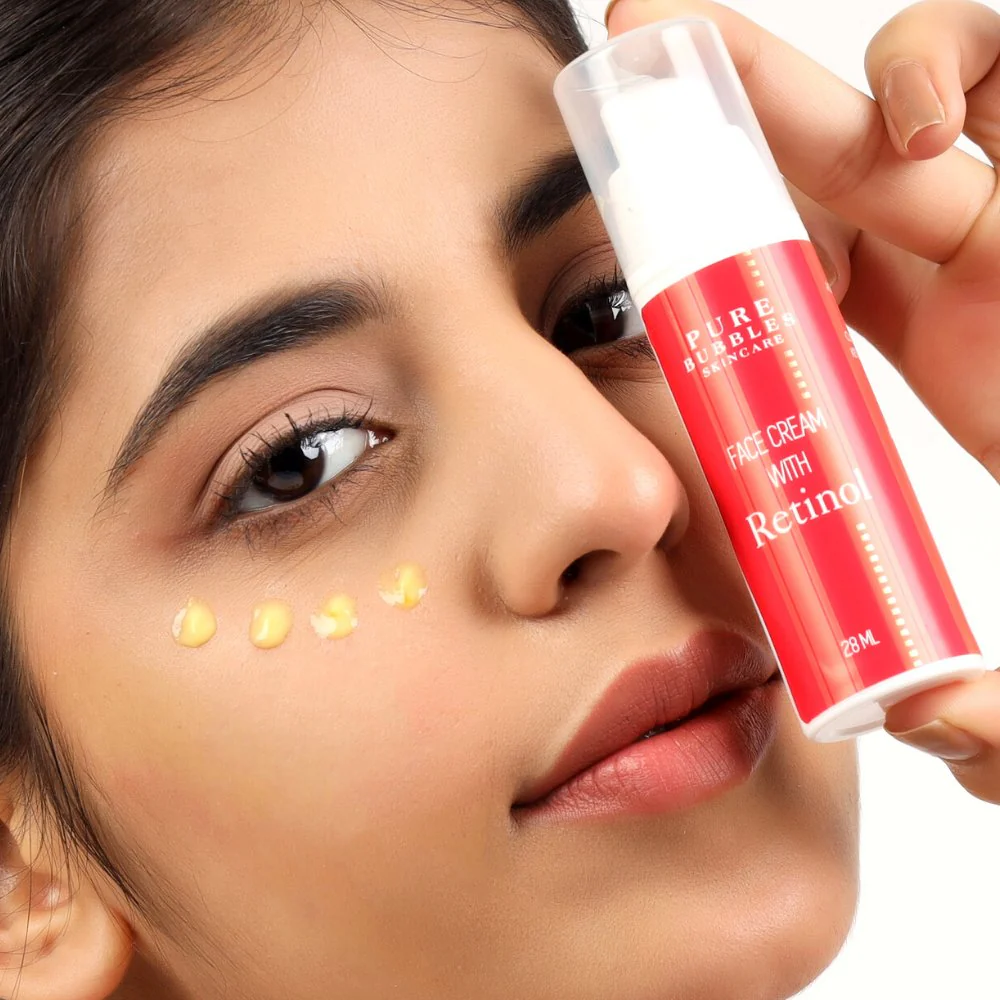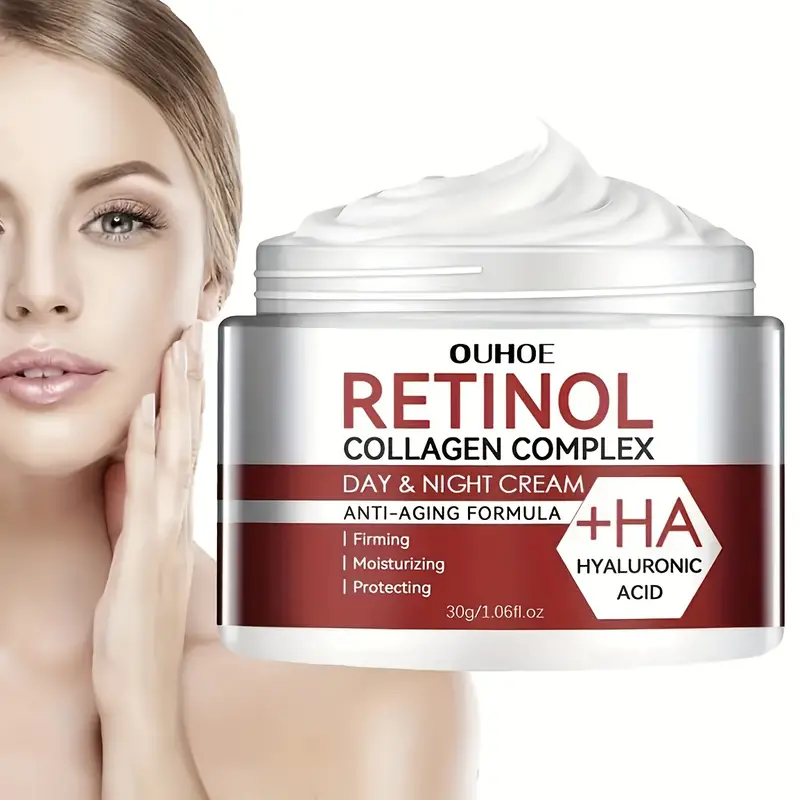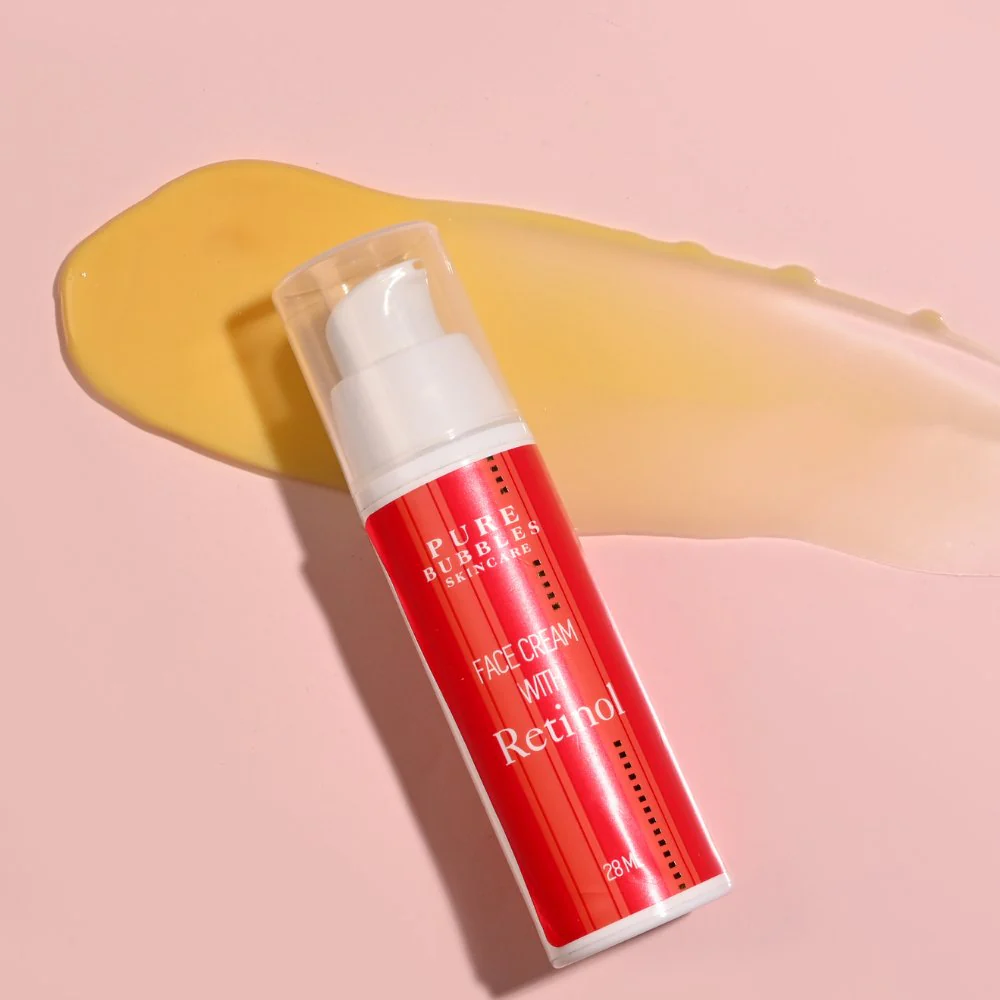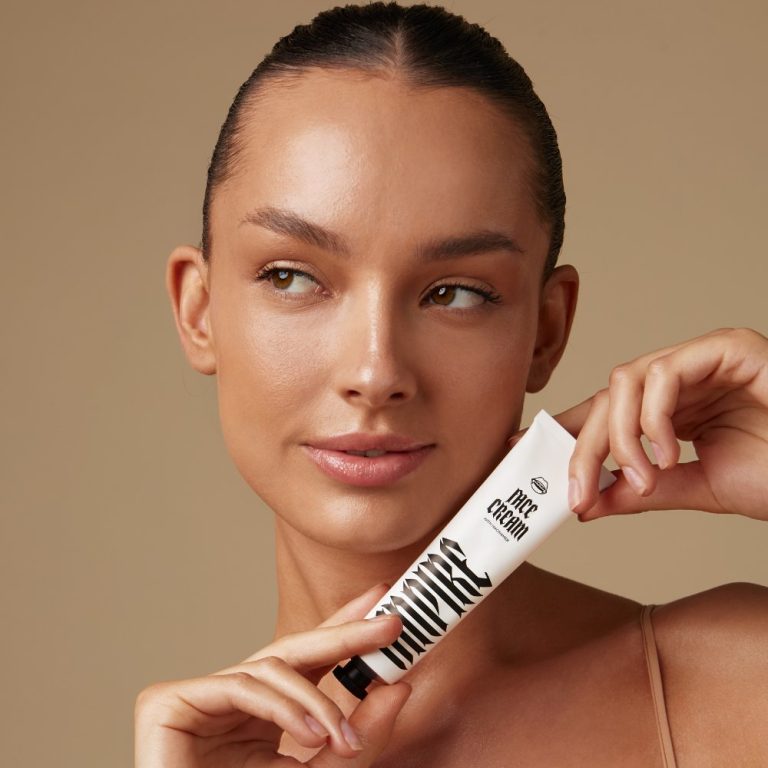
Retinol Face Cream: Unlocking Youthful Skin
Understanding Retinol: The Powerhouse Ingredient in Skincare
Retinol, a derivative of vitamin A, stands as a powerhouse ingredient in the world of skincare. This potent compound has gained immense popularity for its remarkable ability to address various skin concerns. Primarily, retinol works by accelerating cell turnover, effectively sloughing off dead skin cells and promoting the growth of new, healthy ones. This process results in a smoother, more radiant complexion. Additionally, retinol stimulates collagen production, a crucial protein that maintains skin elasticity and firmness. As people age, collagen production naturally decreases, leading to the formation of fine lines and wrinkles.
By boosting collagen synthesis, retinol helps combat these signs of aging, effectively turning back the clock on skin appearance. Furthermore, retinol possesses anti-inflammatory properties, making it beneficial for those struggling with acne or other inflammatory skin conditions. It helps unclog pores, reducing the occurrence of breakouts and blemishes. Retinol also aids in evening out skin tone by fading dark spots and hyperpigmentation. This versatility makes retinol a go-to ingredient for addressing multiple skin concerns simultaneously. However, it’s important to note that retinol can cause initial skin irritation, especially for first-time users. Therefore, gradual introduction and proper usage are crucial for maximizing its benefits while minimizing potential side effects.

The Science Behind Retinol Face Creams: How They Work
Retinol face creams work through a complex biological process that begins as soon as the product is applied to the skin. Upon application, retinol penetrates the outer layer of the skin, known as the epidermis. Once absorbed, it converts into retinoic acid, the active form of vitamin A that can be utilized by skin cells. This conversion process is key to retinol’s effectiveness, as retinoic acid directly interacts with skin cell receptors. At the cellular level, retinoic acid binds to specific receptors in the skin cells, triggering a cascade of biochemical reactions. These reactions lead to increased production of proteins like collagen and elastin, which are essential for maintaining skin structure and elasticity.
Simultaneously, retinol accelerates the rate of cell turnover, causing older, damaged cells to be replaced more quickly by new, healthy cells. This rapid renewal process results in smoother, more evenly toned skin. Additionally, retinol helps regulate sebum production, which can be beneficial for those with oily or acne-prone skin. It also has an antioxidant effect, protecting skin cells from damage caused by free radicals. Over time, consistent use of retinol face creams leads to visible improvements in skin texture, tone, and overall appearance. However, the full effects of retinol are not immediate and may take several weeks to months to become noticeable, as the skin undergoes this transformative process.
Benefits of Retinol Face Creams: A Comprehensive Overview
Retinol face creams offer a multitude of benefits, making them a valuable addition to any skincare routine. Firstly, these creams are renowned for their anti-aging properties. By stimulating collagen production, retinol helps reduce the appearance of fine lines and wrinkles, leading to firmer, more youthful-looking skin. This collagen boost also improves skin elasticity, giving the complexion a plumper, more supple appearance. Another significant benefit is retinol’s ability to even out skin tone. It helps fade dark spots, sun damage, and hyperpigmentation, resulting in a more uniform complexion. For those struggling with acne, retinol face creams can be particularly beneficial.
The ingredient helps unclog pores and regulate oil production, reducing the frequency and severity of breakouts. Additionally, retinol’s exfoliating properties contribute to smoother skin texture, minimizing the appearance of enlarged pores and rough patches. Users often report a general improvement in skin clarity and radiance with regular use. Retinol also enhances the skin’s ability to retain moisture, leading to better hydration and a healthier skin barrier. This improved barrier function can make the skin more resilient against environmental stressors. Furthermore, retinol can help improve the efficacy of other skincare products by increasing their absorption into the skin. While the initial effects of retinol face creams may take time to manifest, long-term use often results in comprehensive improvements to overall skin health and appearance.

Choosing the Right Retinol Face Cream: Factors to Consider
Selecting the appropriate retinol face cream requires careful consideration of several factors. Firstly, the concentration of retinol in the product is crucial. For beginners, it’s advisable to start with a lower concentration (0.01% to 0.03%) and gradually work up to higher strengths as the skin builds tolerance. Those with sensitive skin should opt for gentler formulations that combine retinol with soothing ingredients like niacinamide or ceramides. The type of retinol used also matters; some products use retinol esters or encapsulated retinol, which can be less irritating. Consider the overall formulation of the cream. Look for products that include hydrating ingredients like hyaluronic acid or glycerin to counteract potential dryness.
Antioxidants such as vitamin C or E can complement retinol’s effects, providing additional protection against environmental damage. The texture of the cream should suit your skin type; those with oily skin might prefer lighter, gel-based formulas, while dry skin types may benefit from richer creams. Pay attention to packaging as well; retinol is sensitive to light and air, so opt for products in opaque, airtight containers to ensure stability. Consider any specific skin concerns you want to address, such as acne or hyperpigmentation, and look for formulations tailored to these issues. Lastly, factor in your budget and the brand’s reputation. While higher-priced options may offer more sophisticated formulations, there are effective retinol creams available at various price points.
Incorporating Retinol Face Cream into Your Skincare Routine
Integrating a retinol face cream into an existing skincare routine requires a thoughtful approach to maximize benefits while minimizing potential irritation. Begin by introducing the retinol cream gradually, starting with once or twice a week and slowly increasing frequency as your skin adjusts. Apply the cream in the evening, as retinol can increase skin sensitivity to sunlight. Start with a small amount – a pea-sized portion is usually sufficient for the entire face.
After cleansing and toning, apply any water-based serums, followed by the retinol cream. Wait a few minutes before applying any other products to allow the retinol to absorb properly. For those with sensitive skin, the “sandwich method” can be helpful: apply a moisturizer before and after the retinol cream to buffer its effects. It’s crucial to use a broad-spectrum sunscreen during the day when using retinol, as it can increase sun sensitivity. Avoid using retinol in combination with other potentially irritating ingredients like alpha-hydroxy acids (AHAs) or benzoyl peroxide in the same routine.
Instead, alternate these products on different nights. Be patient with results; it can take several weeks to months to see significant improvements. During this time, pay close attention to how your skin reacts and adjust usage accordingly. If irritation occurs, reduce frequency or switch to a lower concentration. Remember, consistency is key with retinol use, so aim to make it a regular part of your skincare routine for best results.

Potential Side Effects and How to Manage Them
While retinol face creams offer numerous benefits, they can also cause some side effects, especially during the initial period of use. Common side effects include redness, dryness, peeling, and increased skin sensitivity. These reactions, often referred to as “retinization,” are usually temporary and subside as the skin acclimates to the ingredient. To manage these effects, start with a low concentration and gradually increase usage. If irritation occurs, reduce the frequency of application or dilute the product by mixing it with a gentle moisturizer.
Hydration is key when using retinol; apply a nourishing moisturizer over the retinol cream to combat dryness. For those experiencing persistent irritation, consider switching to a gentler form of retinol, such as retinyl palmitate. It’s also important to avoid overexposure to sun, wind, or extreme temperatures while using retinol, as these can exacerbate irritation. Some users might experience a temporary increase in acne breakouts when first starting retinol.
This “purging” effect is normal and usually subsides within a few weeks. If severe irritation or allergic reactions occur, discontinue use immediately and consult a dermatologist. Pregnant or breastfeeding individuals should avoid retinol and opt for alternative ingredients. By being aware of these potential side effects and taking proactive steps to manage them, most users can successfully incorporate retinol into their skincare routine and enjoy its long-term benefits.
Myths and Facts About Retinol Face Creams
Numerous myths surround retinol face creams, often leading to confusion among users. One common misconception is that retinol thins the skin. In reality, retinol actually thickens the skin by stimulating collagen production, improving its overall health and resilience. Another myth suggests that retinol should not be used under the eyes due to the delicate nature of this area. However, when used carefully, retinol can be beneficial for addressing fine lines and dark circles around the eyes. Some believe that retinol must cause visible peeling to be effective, but this is not true.
While some peeling may occur, especially initially, the absence of peeling doesn’t indicate ineffectiveness. There’s also a myth that retinol and vitamin C cannot be used together. While it’s true that these ingredients can be irritating when used simultaneously, they can be effectively incorporated into the same skincare routine by using vitamin C in the morning and retinol at night. Another misconception is that retinol works overnight; in reality, it takes consistent use over several weeks or months to see significant results.
Some people believe that once desired results are achieved, retinol use can be discontinued. However, continued use is necessary to maintain benefits. It’s also falsely believed that retinol is only for aging skin; in fact, it can be beneficial for various skin concerns at different ages. By dispelling these myths, users can make more informed decisions about incorporating retinol face creams into their skincare routines.
Combining Retinol with Other Skincare Ingredients
Understanding how retinol interacts with other skincare ingredients is crucial for creating an effective skincare routine. Retinol pairs well with hydrating ingredients like hyaluronic acid, which can help counteract potential dryness. Niacinamide, known for its soothing properties, can be an excellent complement to retinol, helping to minimize irritation while providing additional skin benefits. Antioxidants such as vitamin C can be used in conjunction with retinol, but it’s best to apply vitamin C in the morning and retinol at night to maximize the efficacy of both ingredients.
Peptides can also be combined with retinol for enhanced anti-aging effects. However, certain ingredients should be used cautiously with retinol. Avoid using retinol simultaneously with other potentially irritating ingredients like alpha-hydroxy acids (AHAs) or beta-hydroxy acids (BHAs). If incorporating these into your routine, use them on alternate nights or at different times of the day. Similarly, benzoyl peroxide can deactivate retinol, so these should not be used together. Sunscreen is a crucial companion to any retinol regimen, as retinol can increase sun sensitivity.
When introducing new products alongside retinol, do so gradually to monitor how your skin reacts. By thoughtfully combining retinol with complementary ingredients and avoiding potential conflicts, users can create a comprehensive skincare routine that maximizes the benefits of each component while minimizing the risk of irritation.

The Future of Retinol in Skincare: Innovations and Trends
The future of retinol in skincare looks promising, with ongoing research and development leading to exciting innovations. One significant trend is the development of gentler retinol derivatives, such as retinyl esters, which offer similar benefits with reduced irritation. These formulations make retinol more accessible to those with sensitive skin. Another innovation is encapsulated retinol, where the active ingredient is enclosed in a protective carrier, allowing for time-released effects and better stability. This technology can enhance the efficacy of retinol while minimizing side effects.
The combination of retinol with other active ingredients in single formulations is becoming more sophisticated, offering multi-functional products that address various skin concerns simultaneously. There’s also a growing focus on natural and plant-based retinol alternatives, catering to the increasing demand for clean and green beauty products. Personalized skincare is another emerging trend, with companies offering customized retinol formulations based on individual skin types and concerns. Advances in delivery systems, such as micro-needling patches infused with retinol, are enhancing the ingredient’s penetration and effectiveness.
Additionally, there’s ongoing research into the potential of retinol for addressing specific skin conditions beyond its current applications. As technology advances, we can expect to see more precise, targeted retinol treatments that offer enhanced results with minimal side effects. These innovations are set to make retinol an even more integral part of skincare routines, catering to a wider range of skin types and concerns.
Conclusion: Embracing the Power of Retinol for Healthier Skin
Retinol face creams have revolutionized the skincare industry, offering a powerful solution for various skin concerns. From combating signs of aging to improving overall skin health, retinol’s versatility makes it a valuable addition to many skincare routines. As with any active skincare ingredient, it’s important to approach retinol use with knowledge and patience.
Understanding how to properly incorporate retinol into a skincare routine, being aware of potential side effects, and knowing how to combine it with other ingredients can significantly enhance its effectiveness. The future of retinol in skincare looks bright, with ongoing innovations promising even more refined and targeted treatments. Whether dealing with fine lines, uneven skin tone, acne, or simply seeking to maintain healthy, radiant skin, retinol face creams offer a science-backed solution. By embracing the power of retinol and using it responsibly, individuals can work towards achieving their skin health goals and enjoy the confidence that comes with a clear, glowing complexion. As research continues and formulations improve, retinol is likely to remain a cornerstone of effective skincare for years to come.

